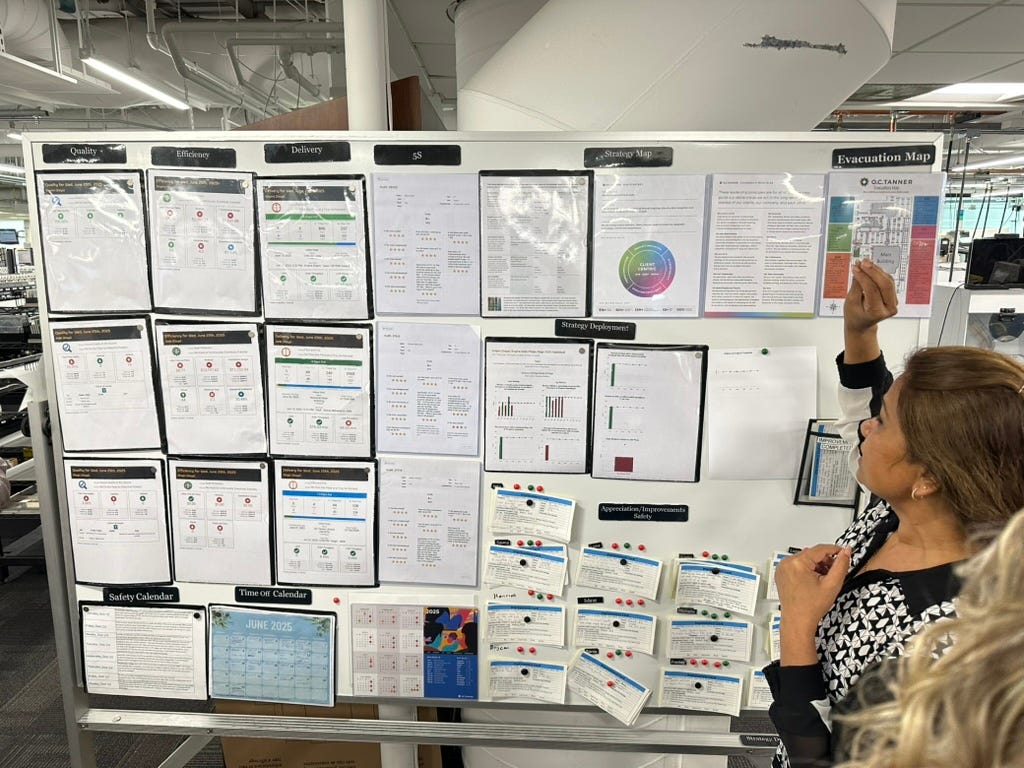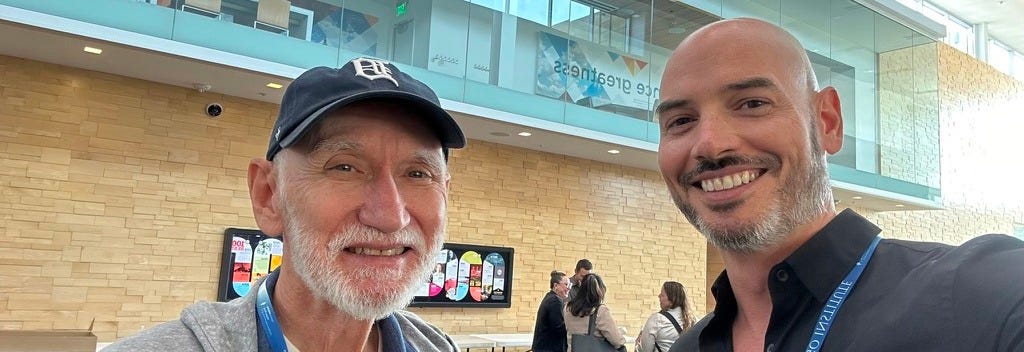Last week I travelled to Utah to do some broadening of my horizons and spend time with the Lean community in the US at the Future of People at Work Symposium. It was an excellent chance to meet some experienced and influential players in the world of continuous improvement. There was representation from the Lean Enterprise Institute, Shingo Institute, Toyota and more. It was like drinking from a Lean firehose for two days :)
The event started with big challenges, to frame the sessions ahead:
How are technological advances and societal shifts reshaping your workplace?
What can be done in education to better prepare the entering workforce?
How can we better work / collaborate across tech-capable generations?
How do we bridge, align, and combine different improvement approaches?
What is the intersection of lean and UX?
Big rocks, but encouraging! These are questions many organizations and communities are grappling with in their own context.
The event was a series of open spaces to discuss various investments of the Lean community, like Adjacent Community Engagement, AI in the context of a Lean BOK, and “Go and See” efforts.
It was also my first “Go and See” experience in a Lean-focused organization, with a tour through the host company facilities at O.C. Tanner (an employee recognition company, with roots in manufacturing small batch awards). It was really impressive to see the openness (in every sense) on display as well as a demonstrated commitment to measurable continuous improvement. I highly recommend a tour if you really want to connect theory, practice, and real context. You can check out my new friend Rich’s company tour virtually or in person here.

Key Themes that Stood Out to Me:
Building bridges: Between communities, practices, theories, and silos
Give and Get Tours: Digital or physical, go and see the actual work happening - this is even more important with invisible, digital work. What may be even more important is giving tours. A tour is amazing motivation to tidy and organize, but it also requires everyone to think and talk about your processes from start to finish, almost like a productized services in itself.
Play: Use games and simulations to teach, practice, design, and test
Meeting people where they are: Seek to understand before being understood, and make it easy for people to make progress
Invisible, variable work is still a small part of Lean (but lots of demand), though all the principles and practices apply when you understand the fundamental differences - this is the future of Lean and the most powerful application
What did I hear and see from the community? Consistent focus on and investment in learning for the purpose of solving problems, and emphasis on humanity and personal meaning and fulfillment at work.
I felt like my Lean education took off like a rocketship, hearing so many stories of transformation, asking questions to folks with 30, 35 years in lean environments, and getting feedback on ideas from my context in tech.
Speaking of that context in tech:
There is a lot of appreciation for tech and enthusiasm for what’s next in this community, but it does seem to be a small minority focus compared to the physical lean context.
There has been lots of work in the tech world to highlight the benefits of lean thinking and practices - to bring lean to tech:
Accelerate by Nicole Forsgren, Jez Humble, Gene Kim (2018)
The DevOps Handbook by Gene Kim, Jez Humble, Patrick Debois, John Willis (2016)
Lean Enterprise by Barry O'Reilly, Jez Humble, Joanne Molesky (2014)
The Phoenix Project by Gene Kim, Kevin Behr, George Spafford (2013)
Continuous Delivery by Jez Humble and David Farley (2010)
Leading Lean Software Development by Mary and Tom Poppendieck (2009)
Implementing Lean Software Development by Mary and Tom Poppendieck (2006)
Lean Software Development: An Agile Toolkit by Mary and Tom Poppendieck (2003)
… but I’m much less familiar with efforts from the Lean community to bring tech to Lean. I’ll be revisiting a few books to update my understanding:
The Lean Tech Manifesto by Fabrice Bernhard and Benoît Charles-Lavauzelle (2024) - it’s in the mail!
Lean and Technology by Paul Myerson (2017)
Lean IT by Steven Bell and Mike Orzen (2010)
… let me know what I’m missing!
I think there’s a big opportunity there and there are definitely others who felt the same. We’ll be working together to bring more tech into the Lean space over the next year, so if you’re interested in sharing your perspective and experiences on what Lean can learn from tech, and how tech can be a part of lean organizations strategy, tactics, and operations - let me know!
I really had an incredible time meeting and listening to folks with decades more experience than me, who were so welcoming and inclusive of adjacent contexts - it was a wonderful experience. I’d recommend the event to anyone who’s looking to make a significant contribution to the future of Lean and Work.
Bonus Rare Treat:
A trip to Snowbird to visit the birthplace of the Agile Manifesto
Summer eBook Sale!
Our publisher, IT Revolution is having their annual summer eBook sale, and for a limited time only, you can grab a copy of Flow Engineering, along with a ton of other great titles, for only $6 in Canada, US, UK, and Australia. A few of my favorite IT Rev reads that are in the sale are Profound Knowledge by John Willis, The DevOps Handbook by Gene Kim, Jez Humble, Patrick Debois, John Willis, Nicole Forsgren, and Wiring the Winning Organization by Gene Kim and Steven J. Spear.







